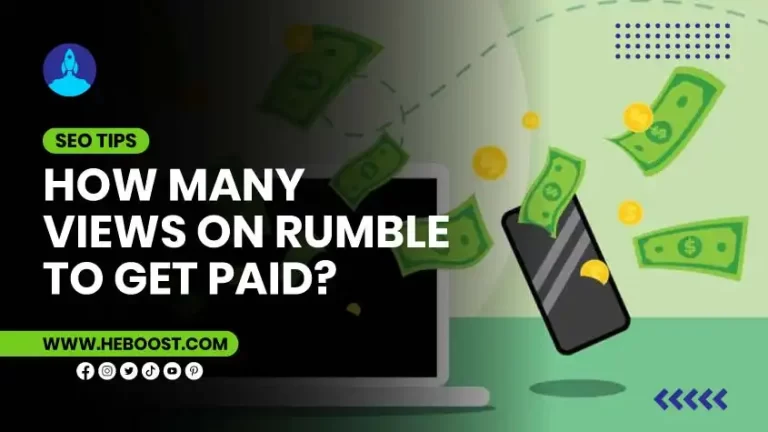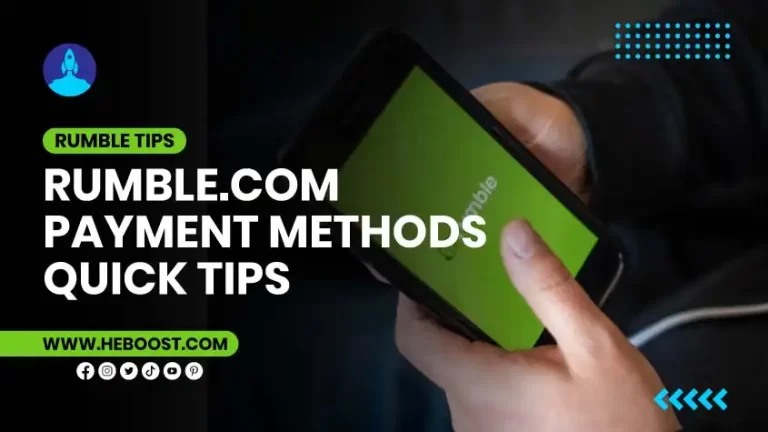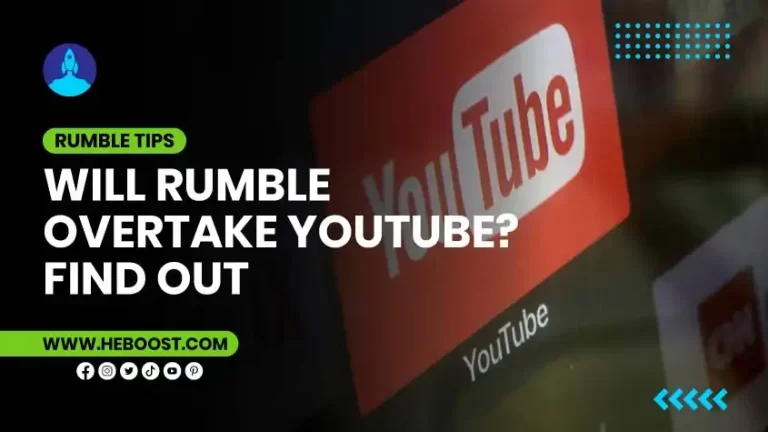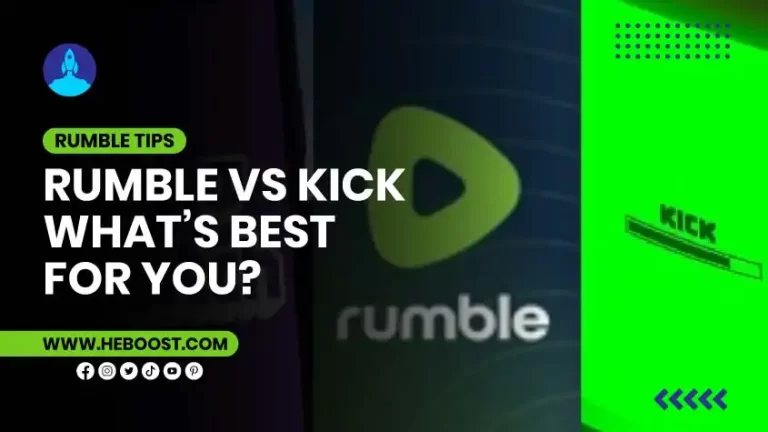Creators Ask: Does Rumble Pay More Than YouTube?
Welcome to the digital colosseum, where creators duke it out for views, likes, and, most importantly, those sweet, sweet revenue streams. In one corner, we have YouTube, the reigning champ of video content platforms, a place so famous that my grandma uses it to fix her sink. And in the other corner, we have Rumble, the scrappy underdog that’s been gaining traction faster than a cat video goes viral. Today, we’re diving headfirst into the question: “Does Rumble pay more than YouTube?” Strap in because we’re about to embark on a wild ride through the land of video monetization.
For years, YouTube has been the go-to platform for creators looking to share their work with the world and, hopefully, earn a living. But as the digital landscape evolves, new players like Rumble are stepping up, promising better deals and more freedom for content creators. With over five years of experience navigating these waters, we’ve seen the tides change, platforms rise and fall, and monetization strategies adapt. In this ever-changing world, one thing remains constant: creators want to know where to make the most moolah for their masterpieces. So, let’s break it down, laugh along the way, and find out if Rumble is the treasure chest it’s rumored to be.
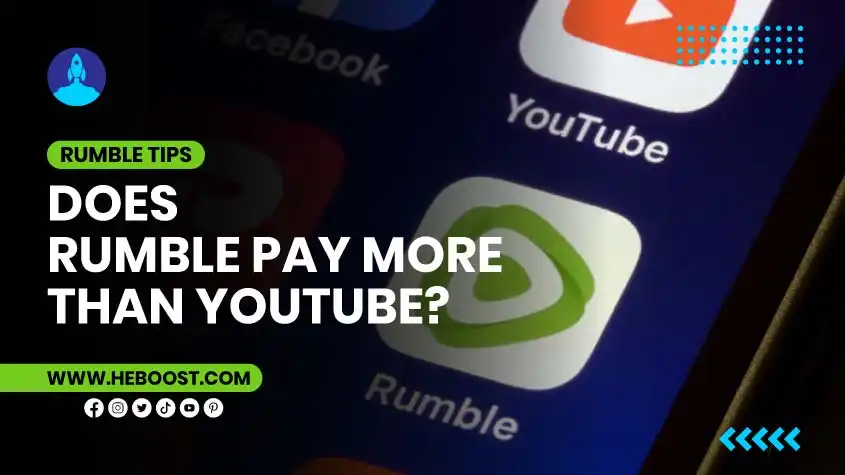
The Money Talk: YouTube vs. Rumble
Comparing Rumble and YouTube is like deciding which is better: pizza or ice cream. Both are excellent in their own right, but they serve different tastes and, in this case, other content creators. With its billion-plus users, YouTube offers a vast ocean where you can cast your net but also faces stiff competition. On the flip side, although more minor, Rumble presents itself as a haven for creators disillusioned with YouTube’s complex algorithms and restrictive policies. But what about the money? Let’s dive into the financials and see how these platforms stack against each other.
Rumble’s Financial Recipe
Rumble enters the ring with a compelling pitch to creators: more control over your content and potentially higher earnings for your videos. But how much does Rumble pay? Unlike YouTube, which primarily relies on ad revenue shared with creators, Rumble offers multiple revenue streams, including ads, subscriptions, and licensing deals. Licensing is where Rumble truly shines, offering creators upfront payments for videos that Rumble can then license to other media outlets. It’s like hitting the lottery if your video goes viral. While the exact figures can vary wildly, creators have reported favorable payouts, primarily when their content is licensed.
The question of “how much does Rumble pay per view?” is a bit more complex. Rumble’s payment structure isn’t solely based on views; it also determines where those views happen (on Rumble’s platform, a licensed partner, or elsewhere) and how your content is monetized through ads or subscriptions. This variability means that while some creators might see higher per-view earnings than on YouTube, others may not, depending on the content’s popularity and distribution. However, for those who hit the right note, Rumble has proven to be a lucrative platform, potentially offering better per-view earnings than YouTube for specific videos.
Recommended Reads: Exploring Rumble Account Types: A Newbie’s Guide
YouTube’s Cash Flow
YouTube, the granddaddy of video platforms, has set the gold standard for how creators can monetize their content. With its ad-revenue sharing model, YouTube offers a straightforward way for creators to earn money: the more views you get, the more cash you pocket. However, not all views are created equal. The amount of money you can make per view on YouTube varies significantly based on factors like the viewer’s location, the type of ads displayed, and the engagement with those ads. On average, creators can expect to earn between $0.01 to $0.03 per view, but this can soar with premium ads and lucrative sponsorship deals.
YouTube’s monetization ecosystem doesn’t continue beyond ad revenue. It includes memberships, where fans pay a monthly fee for exclusive perks; Super Chats, a feature that lets viewers pay to highlight their messages during live streams; and the YouTube Partner Program, which offers access to more sophisticated monetization tools. This diversified approach means successful YouTube creators can build a robust revenue stream combining ad revenue, fan contributions, and more. Yet, navigating YouTube’s complex policies and algorithms can feel like solving a Rubik’s cube blindfolded. It requires strategy, patience, and luck to capitalize on what YouTube has to offer.
The contrast between YouTube and Rumble’s monetization strategies highlights a broader theme in the creator economy: there’s no one-size-fits-all solution. YouTube’s established platform offers a vast audience and a multi-faceted monetization model. Still, it comes with its own set of challenges, including intense competition and strict content guidelines. While smaller and potentially offering higher per-view earnings for certain types of content, Rumble presents an alternative for creators looking for simplicity and potentially higher earnings through licensing deals.
As creators navigate these waters, it’s essential to consider the potential earnings and the type of audience and content each platform favors. With its global reach, YouTube is a powerhouse for creators who can produce content that resonates on a wide scale. In contrast, Rumble’s appeal lies in its ability to offer a niche audience for creators looking for an alternative to YouTube’s saturated market.
Recommended Reads: Grow Fast: Rumble vs Kick, What’s Best for You?
Industry Trends to Watch
In the fast-paced world of digital content creation, staying ahead of trends is akin to having a crystal ball. It’s not just about creating content; it’s about creating content that resonates with where the audience’s attention is heading. Let’s zoom in on a few trends shaping the future of content monetization on platforms like YouTube and Rumble and how you, as a creator, can ride these waves to your advantage.
Short-Form Content Explosion
The rise of short-form content, fueled by the TikTok revolution, has forced both YouTube and Rumble to sit up and take notice. YouTube responded with “Shorts,” its version of bite-sized videos, offering a new avenue for creators to engage with their audience and tap into viral growth opportunities. Rumble is just a little behind, recognizing the potential of short-form content to capture the ever-decreasing attention spans of online viewers. For creators, this means adapting your content strategy to include short, punchy videos that can grab attention in the first few seconds. It’s not just about being brief; it’s about being memorable within that brief window.
The Subscription Model Renaissance
Subscription models are becoming a hot trend, providing a steady income stream for creators beyond the fluctuating ad revenue. YouTube Premium is a prime example, removing ads for subscribers and splitting the subscription fee with creators. Rumble also explores subscription options, offering creators another avenue to monetize their audience directly. This trend towards direct monetization is a boon for creators, allowing for more predictable revenue and fostering a closer relationship with your most dedicated fans. The key is to offer value beyond what’s available for free, whether exclusive content, early access, or special perks.
Recommended Reads: Easy Guide: How to Download Rumble Videos Fast!
Algorithm Changes and Content Discovery
Understanding and adapting to platform algorithms is like trying to catch smoke with your bare hands; it’s tricky but not impossible. Both YouTube and Rumble regularly update their algorithms, affecting how content is discovered and promoted. These changes can be frustrating, but they offer opportunities for savvy creators to jump on new content types or formats favored by the algorithms. The trick is to keep your ear to the ground, stay engaged with the creator community, and be ready to pivot your content strategy to align with these changes.
The Rise of Creator Tools and Analytics
Both platforms invest in advanced tools and analytics to help creators understand their audience and optimize their content. YouTube offers detailed analytics on viewer behavior, engagement metrics, and revenue insights. Rumble also enhances its creator tools, providing more data to help you understand how your content performs. These tools are invaluable for refining your content strategy, identifying what works, and doubling down on it. They allow you to be more strategic about the content you produce, focusing on quality over quantity and ensuring every video has the potential to contribute to your revenue goals.
As we navigate these trends, the key takeaway for creators is to remain adaptable and constantly experiment. The digital landscape is in constant flux, with new opportunities and challenges emerging quickly. By staying informed, engaging with your audience, and being willing to try new content formats or monetization strategies, you can position yourself to thrive on whichever platform you choose.
FAQs for Does Rumble Pay More Than YouTube?
In this bustling digital marketplace, questions abound. Here are the answers to some of the most pressing FAQs we encounter from creators navigating the YouTube and Rumble platforms. Let’s demystify some of these queries with humor and clarity.
Does Rumble pay like YouTube?
It’s like comparing apples to, let’s say, slightly different apples. YouTube’s payment model is primarily ad-based, supplemented by memberships, super chats, and more. It is a mixed bag of opportunities. On the other hand, Rumble throws a curveball with its focus on licensing deals alongside traditional ad revenue. This means that while YouTube pays consistently for ad views, Rumble offers the potential for bigger paychecks if your content is licensed. In a nutshell, Rumble pays differently, but under the right circumstances, it could pay more.
Can I make a living off Rumble?
Absolutely! But remember, it’s like any entrepreneurial venture: it requires thoughtful strategy, a bit of luck, and a lot of hard work. Creators who find their niche and engage their audience effectively can earn a significant income on Rumble, especially if their content is attractive for licensing. It might require digging like treasure hunting, but finding that gem can be game-changing.
Is it more accessible to grow on Rumble or YouTube?
Growth can feel like climbing a mountain, but each platform has its climbing gear. On YouTube, you’re up against many creators, but a larger audience is ready to consume your content. Being smaller, Rumble offers less competition, making it easier to stand out. However, the audience is also smaller. Your growth strategy should leverage the strengths of each platform: use Rumble to carve out your unique space and YouTube to reach the masses.
How do I maximize my earnings on these platforms?
Maximizing earnings is juggling content quality, audience engagement, and platform algorithms. Here’s the secret sauce: diversify your content across platforms, tailor your videos to what works best on each, and engage directly with your audience to build loyalty. Utilize analytics tools to refine your strategy, focusing on content that drives engagement and revenue. And never stop learning; the digital landscape continually evolves, and staying ahead means being adaptable and innovative.
Wrapping Up
As we wrap up this journey through the digital landscapes of YouTube and Rumble, it’s clear that the path to monetization is as varied as the content creators themselves. Whether Rumble pays more than YouTube isn’t a one-size-fits-all answer; it hinges on your content, your audience, and how you leverage each platform’s unique opportunities. Diversification isn’t just a strategy for investors; it’s also a golden rule for digital creators. By spreading your content across platforms, you’re not just maximizing your revenue potential; you’re ensuring a broader reach and a more resilient career in the ever-evolving world of online video.
Adaptability, engagement, and a relentless pursuit of creativity are the keys to success in this dynamic realm. Keep experimenting with formats, stay tuned to the latest trends, and always listen to your audience. They’re the compass that guides your journey across these digital seas. Whether you’re a YouTube veteran considering a Rumble debut or a creator eyeing YouTube’s vast audience, there’s room for growth, innovation, and substantial earnings. So, here’s to your next viral hit, your next monetization milestone, and the endless possibilities that await in the creator economy. Happy creating!

